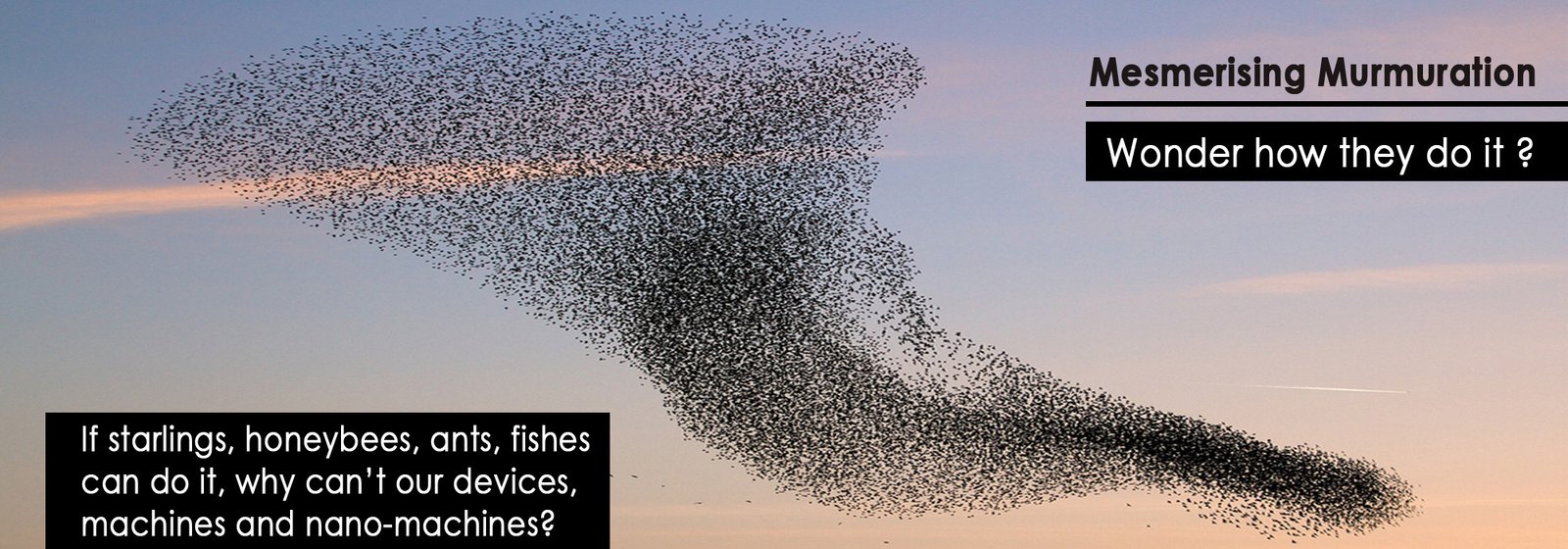
CAI & IoNT
Collective Artificial Intelligence (CAI) & Internet of Nano-Things (IoNT)
If starlings, honeybees, ants, fishes can do it, why can’t our devices, machines and nano-machines?
We may not realize but collective intelligence is an inherent quality of any living system. Examples of such collective intelligence are plentiful in nature, e.g. swarming of bird flocks particularly murmuration of starlings, ant colonies, animal herding, fish schooling, bee hiving, etc. Thousands of them moving in perfect harmony, as if each one knew exactly what to do to produce the collective spectacle. We wonder who is choreographing that complex and sophisticated coordination. These animals rely on collective thought, which scientists have dubbed as swarm intelligence or collective intelligence.
Orchestration of these collective actions is done either via quorum sensing or some such algorithm depending on the task they are set out to accomplish. It means that collective decisions are based on signals produced, sensed and disseminated by individual peers and processed as collective artificial intelligence (CAI). Resulting CAI coming from collective wisdom of many it potentially reaches superhuman levels.
Unlike conventional individualized machines, nano-machines always operate in a connected cooperative environment, displaying collective behavior in response to peer stimuli. Nanonetworking, therefore, by its nature, is inherently decentralized, self-governing and autonomous. Such unique self-organizing properties of the nanoscale machines and the nature of nanonetworks warrant new approaches for their real time interconnection with human interfacing devices.
With shrinking sensors from millimeters or microns in size to the nanometer scale, small enough to circulate within living bodies, nanonetworking is not a fiction anymore. The interconnection of nanoscale devices with existing communication networks and ultimately the Internet, defines a new networking paradigm first introduced by Akyildiz and Jornet from Georgia Tech as the Internet of Nano-Things (IoNT). In their seminal paper they proposed an architecture of nano-nodes communicating with nano-router for this new nanonetworking model.
The transition from smart nanosensors to the IoNT seems inevitable, but big challenges will have to be met before IoNT goes mainstream. Integration of nanonetworking components needed for a self-powered nano-device is a challenging work in progress. A nanonetworking protocol that is in sync with the inherent decentralized nature of nanodevices has to be designed. Issues of privacy and safety also have to be resolved.
We are developing an ultra-low latency blockchain protocol for building safe, secure, private infrastructure for the IoT devices and things include almost everything from autonomous cars to a pet or a precious painting. It enables real time communication between peers and builds collective CAI for their super intelligent decision-making.
We believe this new networking paradigm can also satisfy the nanonetworking needs of the nano-things for building the future IoNT. Projected to be worth $9.69 Billion by 2020, the IoNT market is round the corner, and motivation enough for the nanotech industry to stock of. When it arrives, the IoNT could provide much more detailed, inexpensive, and up-to-date status of almost everything around us, from cities, homes, gadgets, and even our own bodies.
We are implementing these new paradigms of ultra-low latency blockchain and decentralized CAI in six use-cases that are mature enough for commercial launches. The first 10 claims of our patent on blockchained CAI and its enablement of safe autonomous traffic and nanonetworks of future can be viewed here.